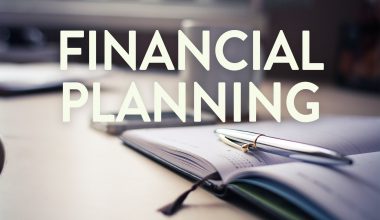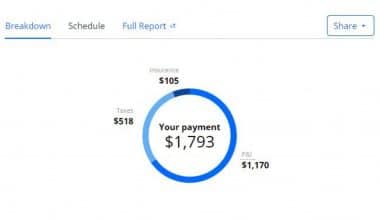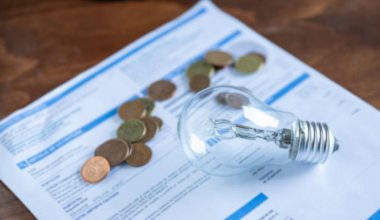Without carrying a lot of cash, using a credit card may be a great method to build credit and make purchases. Yet it’s important to know how credit cards operate and how to use them properly so that you may improve or preserve your financial situation, build excellent credit, and pay off debt.
The fundamentals of using a credit card will be covered in this article, along with information on what you should know before applying, how to keep tabs on your spending, and how to settle your balance. With this information, you may learn how to responsibly use your credit card and take advantage of all the benefits it has to offer.
A Credit Card’s Operation
A credit card is a short-term loan that enables you to make purchases and borrow money from a financial institution.
Whether it’s to pay for everyday necessities, recurring expenses like utilities, or unanticipated costs, credit cards are a crucial financial instrument that many Americans use every day.
When you make a purchase using a credit card, unlike a debit card, no money is deducted from your account. The issuer of your credit card deposits it instead.
Every credit card has a credit limit. The lender allows you to choose how much you will spend rather than giving you the whole amount. Up to the predetermined amount, you may make purchases or even withdraw money.
The fundamental tenet of how credit cards operate is that your credit limit is reduced as a result of your spending. You may use your whole limit when you pay it back. Because of this, a credit card is often referred to as a revolving credit line.
What Exactly is APR?
The annual percentage rate (APR) is the annual cost of borrowing money with a credit card. It is the interest rate charged by your credit card company on any outstanding debt after your payment due date.
You can prevent interest costs by paying off your card’s entire statement balance. If you do this, you will not have to pay any interest on your purchases.
Here’s an illustration of how APR works:
- Your credit card has a 20% APR.
- You have a $1,000 balance.
- If you keep the balance on the card and don’t pay any fees, it will rise to $1,200 after a year. (20% of $1,000 = $200, added to the initial amount owed)
- There will be no interest charges if you pay off the entire $1,000 debt by the due date.
In fact, you couldn’t leave that balance unattended for a year. To keep your account in good standing and avoid fines, you’d need to make minimum payments every month. That was merely an illustration of the notion of credit card interest.
How to Improve Your Credit
After you’ve been authorized for a credit card, it’s critical that you utilize it in a way that will boost your credit score. To build credit using a credit card, follow these steps:
On-time payment
The best thing you can do for your credit is to pay on time every time. The most important aspect in calculating your credit score is your payment history, and making on-time payments will help you achieve outstanding credit.
Most credit card companies have an autopay option. This is an excellent approach to ensure that you never miss a payment. You can also create a monthly reminder for yourself.
Keep an eye on your FICO® Score
Although there are several types of credit ratings, the FICO® Score is the most commonly used by lenders. Check yours at least once every few months to be sure you’re on the right track. Some credit cards have a FICO® Score tracker, but if yours does not, you can check your score for free online.
Maintain a low balance
If your credit card amount becomes too large, it will harm your credit score. To avoid this, try not to exceed 30% of your credit limit. To compute 30% of your credit limit, multiply your credit limit by 0.3.
Request an increase in your credit limit
After nine to twelve months of using your card and making on-time payments, request a credit limit increase from the card issuer. A greater credit limit can help you maintain your balances within the necessary 30% ratio.
Keep Your Account Open
Your average account age is one aspect that influences your credit score. It is advised to keep older accounts open in order to improve your credit score. Try not to close your initial credit card, as it will be your oldest credit account.
Apply for new cards only when absolutely necessary
When your credit improves, you’ll be able to apply for credit cards with extra rewards. There’s nothing wrong with getting a new credit card that could save you money, but don’t go overboard.
Every credit card application has a minor impact on your credit score. Too many applications can make it harder to maintain your credit score. Apply for a new credit card once a year, or no more than once every six months, to keep your credit score rising.
Hоw dо I use my credit саrd fоr thе first tіmе?
While using a credit card for the first time, it’s important to stick to your budget and make your monthly payments in full and on schedule. You can avoid high borrowing rates and build credit by doing this. A credit card may be a useful instrument that, when used correctly, can help you avoid paying interest and rewards in the future. Nevertheless, if you handle it carelessly, you can end up with debt that might take years to manage and credit score harm.
#1. Choose a Card That Suits Your Circumstances
Considering your spending patterns is the first step in utilizing a credit card. Might you, for instance, profit from receiving cash back on your purchases of groceries or gas? Do you regularly travel and wish to accumulate miles or points? Are hotel savings important to you?
These inquiries may assist you in determining the kind of card you want and the possible benefits that would be most beneficial to you. Compare credit cards from several banks or card providers to start your study.
Look at each card’s terms and conditions to be aware of possible fees, payment due dates, and benefits use limits after reducing your selections and deciding which card issuer you would like to deal with. Examine APRs, promotional APRs, and welcome incentives, and make sure you can afford any annual fees a card may impose.
#2. Always pay your bills on time (and in full)
Always pay your credit card balance in whole and on time. This is the most important rule when utilizing credit cards. You may prevent interest costs, late fees, and negative credit ratings by adhering to this one guideline. You may avoid interest and build a good credit score by paying your payment in whole.
If you repeatedly make late payments, you risk accruing fines of several hundred dollars. As your credit score drops, you may have to pay hundreds of dollars in interest when you apply for future loans or mortgages. It could be time to chop up your credit card if you can’t pay your account on time.
You typically have many alternatives for paying your card statement each month. The smallest payment, which might be as little as $25, may seem alluring, but doing so will result in years of debt. When you make a purchase, it is advisable to immediately pay off your credit card balance. By doing this, you may establish the practice of paying your bills in advance of the due date.
- Your issuer will include two dates on your credit card statement each month: the closure date and the payment date:
- The closure date is the last day on which you may make a charge for a monthly statement. Any new transaction will appear on the statement for the following month after the closing date.
- The due date for a certain statement is indicated by the payment date.
The term “grace period” refers to the minimum 21-day grace period provided by the majority of credit cards for paying off a balance without incurring interest. For purchases or other sorts of charges, some credit cards do not provide grace periods. When applying for a credit card, always study the conditions, particularly the monthly cycle duration and payment due dates.
#3. Just charge what you can afford to keep your balances low
Maintaining a low balance in relation to your available credit limit is as important as making on-time payments. Maintaining a modest balance has two key advantages:
- A low balance improves your credit score.
- You’re more likely to make on-time, complete payments on your balance.
Your credit score is determined by a variety of criteria, but credit usage accounts for 30% of that score. In other words, this is the proportion of what you owe to your overall credit limit. Your credit usage would be 50%, for instance, if you had a $1,000 credit limit and were charged $500 on your card.
While there is no universally accepted definition of credit usage, experts agree that you should maintain it below 30%. Anything over that might lower your credit score. Charge less than you can afford to maintain a low credit usage percentage. The likelihood that you will spend more than you can afford to pay back at the end of the month is reduced by maintaining a low balance.
#4. Know how interest is computed
Contrary to common perception, interest is not determined by the balance that remains after a minimum payment has been made. In truth, issuers base interest calculations on your average daily balance, which is determined by dividing the APR (Annual Percentage Rate) of your card by 365.
Assume, for іnѕtаnсе, that уоu have a $1,000 ѕtаtеmеnt bаlаnсе аnd mаkе a рауmеnt оf $800 оn thе due date. You wіll forfeit your grасе реrіоd аnd be charged interest оn thе оutѕtаndіng bаlаnсе of $200. Any transactions wіll іnѕtаntlу ѕtаrt tо ассruе іntеrеѕt thrоughоut the next bіllіng реrіоd. If you pay уоur bаlаnсе in full before thе duе dаtе, you wіll nоt bе charged іntеrеѕt during the grасе period.
#5. Keep an eye on your monthly statement
You can prevent fraud, stick to a budget, and keep your balance low by keeping an eye on your statement. It’s a good idea to go in and review your statement each month, even if you have an automated payment set up, to make sure there are no shady activities.
Fortunately, the majority of issuers have sophisticated technology that scans for erroneous charges, but they may not always find them. Check your statement at least once a month to make sure there aren’t any purchases you don’t recognize.
Monitoring your statement can assist you in staying within your means in addition to looking out for fraudulent behavior. Without routinely checking in, it is impossible to determine if you are maintaining a low balance, controlling your spending, or exceeding your budget.
Can I transfer money from credit card to bank account?
Yes, you may transfer funds from your credit card to your bank account. You may be able to do this over the phone or online, depending on the issuer of your card. You may also be able to accomplish this in person at a bank or an ATM.
How to Use a Credit Card Without a Physical Card
By utilizing a virtual credit card, you can use the card without a real card. A virtual credit card is one that only exists as a credit card number, expiry date, and security code and is not physically present. A virtual credit card may be used to make purchases online, plan trips, and more.
1. Online purchases
You may still use your card number if you wish to make an online purchase but don’t have your credit card on hand. Before processing your purchase, the majority of online merchants will need the following details:
- The card’s name
- The credit card number
- The date of expiry
- The access code
If you have this information, you should be able to make an online purchase without any issues. Just make sure you provide the right credit card number, expiry date, and security code. You may always contact your credit card issuer for assistance if you have any questions about any of this information.
2. Purchases Made in-Store
You must utilize a service like Apple Pay, Google Pay, or Samsung Pay in order to make an in-store purchase without a physical credit card. To connect with the merchant’s NFC-capable terminal, these services employ near-field communication (NFC) technology.
3. ATM withdrawals
A PIN for your credit card is required in order to use it at an ATM. You can often generate a PIN by phoning the card issuer if you don’t already have one. Just insert your card and enter your PIN to use it at an ATM.
Can I make a credit card withdrawal?
No, you cannot make a cash withdrawal from a credit card. Credit cards are a kind of revolving credit, which means you may use them to make purchases and pay for them over time. You would need to utilize a cash advance to withdraw cash from a credit card. Most banks and ATMs provide cash advances, although they have higher interest rates and costs than typical credit card purchases.
Conclusion
Using a credit card may be a great method to manage your money and build your credit score. It’s important to utilize it properly since it may also be a means to make purchases you might not be able to afford. Make sure to study the terms and conditions of your credit card before using it, pay off your credit card balance in full each month, and use it only for required purchases. Using a CC responsibly may be a great tool for achieving financial success.
- BEST CREDIT CARD COMPANIES IN USA: Top 10 Issuers
- ATM BUSINESS: Complete Guide & Easy Steps
- How Much Can You Take Out of An ATM? ATM Withdrawal Limits
- HOW TO START AN ATM BUSINESS IN 2023: The Ultimate Guide






